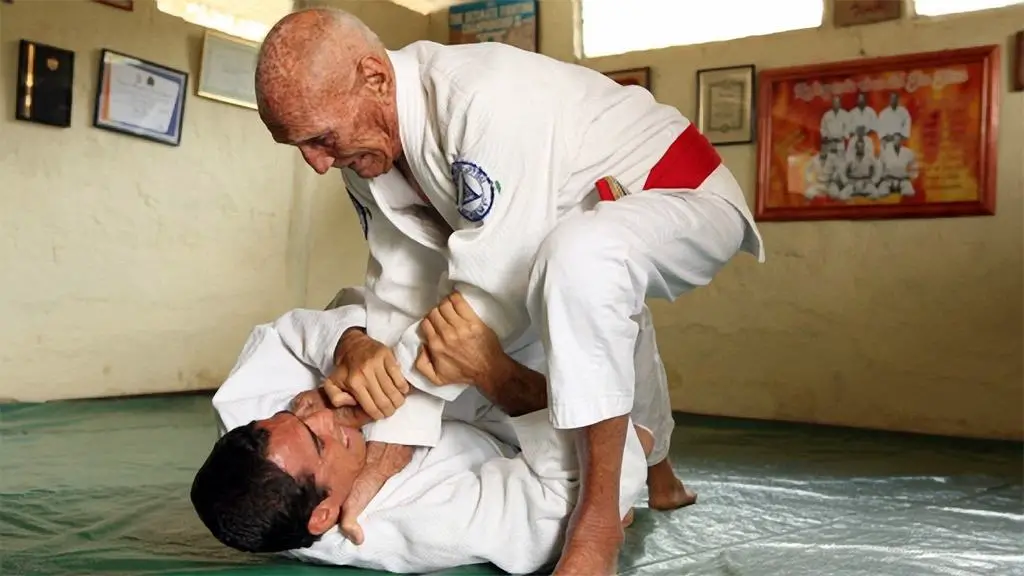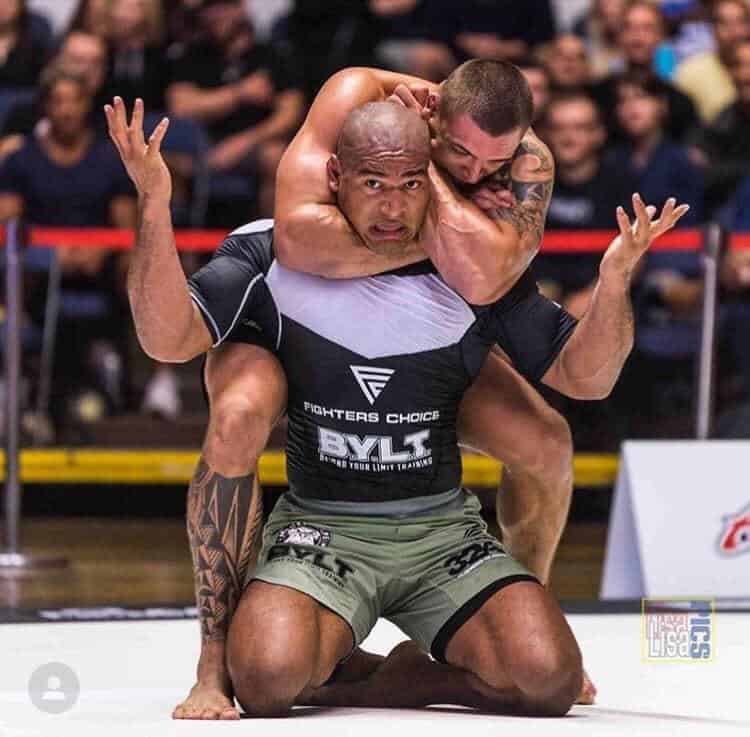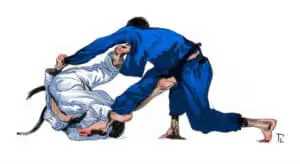
BJJ is a lot of fun. A key component of what makes the martial art so enjoyable and addictive is the satisfaction you get when you are improving and progressing. Is there any better feeling than hitting a technique during sparring that only last week you couldn’t even drill or finally submitting that purple belt who beats you up every class?
Unfortunately, for many BJJ students their progression stalls, they find themselves unable to improve and their once amazing hobby starts becoming a chore. In this article we will look at why your BJJ skills aren’t improving and what you can do about it.
Why Am I Not Getting Better At BJJ?
You are likely not getting better at BJJ because you lack fundamentals, neglect positional sparring, spend too much time on your A game and are not on the BJJ mats enough every week.
Not Spending Enough Time Training BJJ Is Preventing Your Progression

When you start your BJJ journey as a white belt, training 2 to 3 times a week for 1 to 1.5 hour each session is enough to improve your Jiu Jitsu skills. This is because just by learning the very basics of BJJ you can significantly improve your grappling ability.
For example by learning to keep your elbows tucked and your hands off the mat you can go from being submitted 8 times a round to only 4 or 5. A small adjustment like that can instantly make you so much harder to submit.
The same can be said for your offensive BJJ game. If you are able to learn how to do 1 or 2 guard passes with decent technique you can quickly find yourself slicing through fellow white belts guards.
However, as you become more and more advanced it will no longer be sufficient to only pick up a few things and add them to your arsenal if your goal is consistent progression. Most BJJ athletes begin stalling around the middle of blue belt after they have been training for 2 to 3 years.
This is when many BJJ students found out that 2 to 3 hours of Jiu Jitsu mat time is not sufficient to improve. The ideal training volume for a BJJ athlete looking to achieve noticeable and consistent progression is 10 to 12 hours of weekly training.
This is of course not attainable for all BJJ students however if you are currently only training 3 hours a week if you can double your training volume to 6 hours you should see a big uptick in your Jiu Jitsu skill development.
It may seem obvious but the more you do something the more likely you are to improve. This is the same for BJJ. Do a little and experiment and think how often the best guys at your academy train? I would be very surprised if the best students are on the mats less than 6 hours a week and I’m sure there are young hungry competitors who are going overboard putting in 20 hours per week chasing progression.
The more time you spend training BJJ the greater opportunity you have to learn new techniques, improve your current techniques and get more experience stress testing your game during sparring.
Increasing training volume is usually enough to kick start the progression of most recreational BJJ athletes. However, low training volume is not the only reason a BJJ athlete may be getting better. What they are doing at training also plays a big role because if you spend an additional 5 hours a week training suboptimally you may only slightly improve your skills.
In the next sections we will look at how to optimise your BJJ training so you can continue to improve every time you step on the Jiu Jitsu mats.
A Lack Of Fundamentals Stops You Getting Better At BJJ

Many BJJ athletes get to the blue belt stage and find that their fundamentals are poor which severely hampers their ability to reach the next stage of BJJ progression.
You would be surprised at the amount of BJJ blue belts who don’t understand fundamental concepts of BJJ such as the importance of establishing inside control, maintaining ideal posture with the back and neck straight, the need to control an opponent’s hips, how to make your opponent carry your bodyweight and the art of unbalancing.
The ability to understand and implement these grappling fundamentals separate an ok blue belt from a really tough purple belt. A strong purple belt will be able to exhibit much higher levels of control while countering opponents who attempt to establish their own form of control.
BJJ students whose progression stalls after training for a couple of years come to the realisation that BJJ is less about learning a collection of techniques but more about understanding the underlying principles of grappling.
This is why a wrestler who has strong wrestling fundamentals can come into BJJ and easily control BJJ blue belts and even purple belts with no BJJ training. They know how to establish inside control and the importance of controlling the hips and neck of an opponent.
If you feel like you aren’t getting better at BJJ you should reexamine your fundamentals and see if first you understand the underlying concepts of grappling and why certain positions and techniques are so effective. After that you should be honest with your game and analyse whether or not you are implementing these fundamentals everytime you step on the BJJ mats.
A great way to improve your fundamentals is to spar without using submissions. Instead of worrying about specific techniques just focus on maintaining ideal body mechanics and advancing position. This will help you determine if you are just relying on certain moves or if you actually know how to move your body optimally in a BJJ context.
Not Doing Enough Positional Sparring Will Stop You Getting Better At BJJ

To improve your overall BJJ skills you need to aggressively work on your weaknesses. The most effective way to plug gaps in your BJJ game is to perform positional sparring.
When you only do free sparring you can rarely end up in key BJJ positions, which prevents you from practicing those areas. This can leave huge holes in your game.
For example let’s say you have terrible back control. You can not hold onto the back position to save your life. When you roll you rarely attack the back because you know you are terrible there or you are training with people who are too good and you aren’t capable of taking their back.
The result of training like this is your back control never improves. You can end up training BJJ for years and still never develop back control skills.
A quick and easy way to fix this problem is to do positional sparring with a focus on the key positions on BJJ. If you do 5 sparring rounds, multiple times a week of just holding back mount and resetting when your partner escapes you will get so much direct practice that your back control will radically improve.
If your BJJ skills have stalled and you are weak in some of the key positions in BJJ then you need to start including positional sparring into your training regime. The most effective way to improve your BJJ is specific practice. Positional sparring allows you practice Jiu Jitsu much more specifically then typical sparring.
John Danaher is particularly fond of positional sparring. The first couple rounds of sparring during his classes are positional. The athletes will start in different positions such as mount, back mount and then reset when an athlete loses the position or there is a submission.
If your gym doesn’t do positional sparring you can either ask your training partners if they want to do it during sparring or organise to do it during open mats. You could also ask your coach if they would consider adding it to some of their classes.
Conclusion
It is inevitable if you train BJJ long enough that your progression will start to stall. It is normal to wonder why your Jiu Jitsu skills aren’t getting better. Fortunately there are some easy solutions to your lack of BJJ development.
To improve your BJJ you should increase your training volume, aim to be on the mats 10 to 12 hours a week. You can work on improving your fundamentals and knowledge of ideal grappling body mechanics. Finally you can increase the amount of positional sparring you are doing to give you a greater opportunity to work on your weaknesses.
